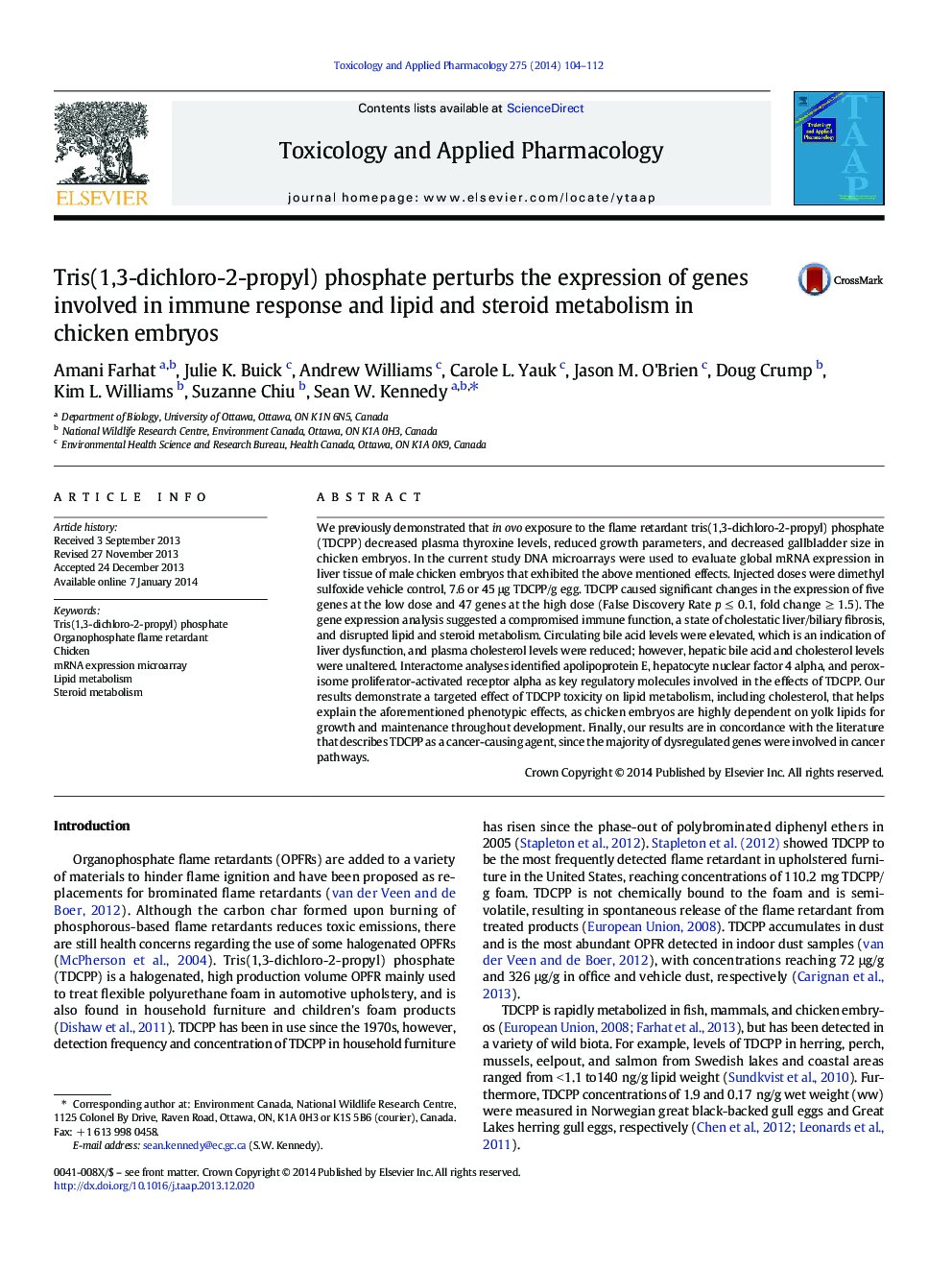| Article ID | Journal | Published Year | Pages | File Type |
|---|---|---|---|---|
| 2568766 | Toxicology and Applied Pharmacology | 2014 | 9 Pages |
•TDCPP dysregulates genes involved in immune function and lipid metabolism.•A targeted effect of TDCPP toxicity on cholesterol metabolism is apparent.•A state of cholestatic liver fibrosis is suggested by the expression profile.•Elevated plasma bile acids suggest that TDCPP causes liver dysfunction.
We previously demonstrated that in ovo exposure to the flame retardant tris(1,3-dichloro-2-propyl) phosphate (TDCPP) decreased plasma thyroxine levels, reduced growth parameters, and decreased gallbladder size in chicken embryos. In the current study DNA microarrays were used to evaluate global mRNA expression in liver tissue of male chicken embryos that exhibited the above mentioned effects. Injected doses were dimethyl sulfoxide vehicle control, 7.6 or 45 μg TDCPP/g egg. TDCPP caused significant changes in the expression of five genes at the low dose and 47 genes at the high dose (False Discovery Rate p ≤ 0.1, fold change ≥ 1.5). The gene expression analysis suggested a compromised immune function, a state of cholestatic liver/biliary fibrosis, and disrupted lipid and steroid metabolism. Circulating bile acid levels were elevated, which is an indication of liver dysfunction, and plasma cholesterol levels were reduced; however, hepatic bile acid and cholesterol levels were unaltered. Interactome analyses identified apolipoprotein E, hepatocyte nuclear factor 4 alpha, and peroxisome proliferator-activated receptor alpha as key regulatory molecules involved in the effects of TDCPP. Our results demonstrate a targeted effect of TDCPP toxicity on lipid metabolism, including cholesterol, that helps explain the aforementioned phenotypic effects, as chicken embryos are highly dependent on yolk lipids for growth and maintenance throughout development. Finally, our results are in concordance with the literature that describes TDCPP as a cancer-causing agent, since the majority of dysregulated genes were involved in cancer pathways.
